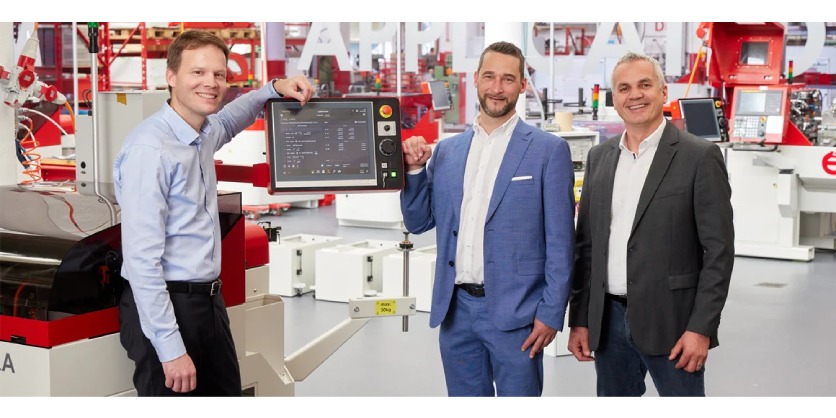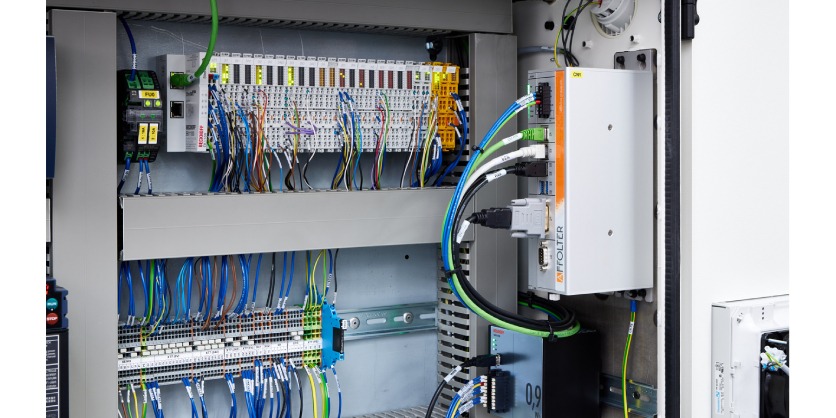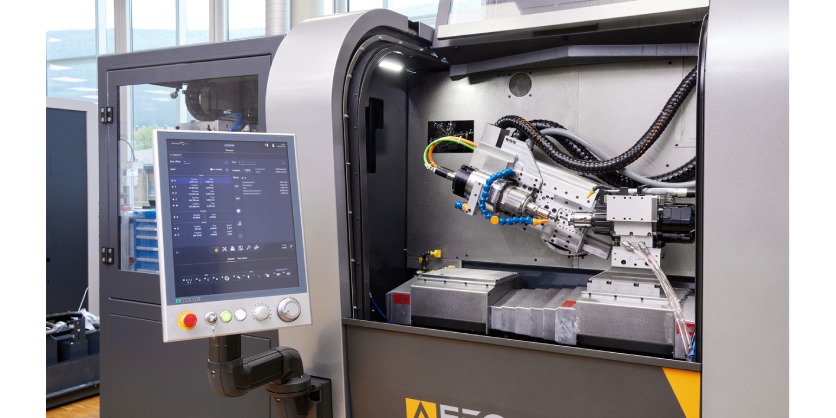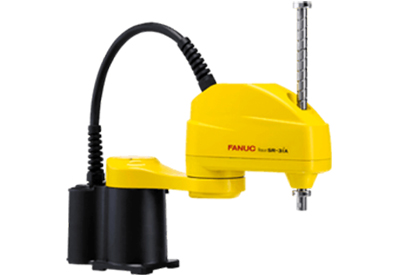Precise Machining of Small Parts with TwinCAT CNC
January 22, 2024

Open and flexible – right to the core
Producing large parts with precision is not easy. But how do you produce the smallest components, such as gears and screws for the watch industry or contact pins for connectors, with micrometer-level accuracy and in large quantities? Swiss companies Esco and Affolter achieve this feat in their CNC machines with TwinCAT CNC and servo drive technology from Beckhoff.
In Watch Valley, a region between Basel and Geneva, an ecosystem has developed over several centuries around the watch industry and the smallest precision components for micromechanical devices. Machine builders such as Esco SA in Les Geneveys-sur-Coffrane and Affolter Group SA in Malleray are one important part of this ecosystem. Their CNC machines are used to manufacture the smallest gears, screws, shafts, and other components at maximum precision, practically laying the foundation for the famous precision of Swiss watch movements.

Esco specializes in lathes for the production of parts with high accuracy and impeccable quality in medium and large quantities. As well as turning as their main process, the machines offer additional machining functions. They make it possible for complex parts to be produced on the compact machines.
Stationary material and rotating tools
Unlike conventional automatic lathes, Esco machines are characterized by an individual operating principle: stationary material, rotating tools. This allows the machines to process ring or bar material in a fully automated process without interruptions. “In addition, the proximity of the tools to the workpiece offers advantages in terms of production rate and surface quality,” says Vincent Fankhauser, sales manager at Esco. The basis for the precision and the short machining times is the spindle, which rotates at up to 12,000 rpm.
Esco has been relying on PC-based control for the automation of its machines since the beginning of 2020, for which it uses TwinCAT 3 from Beckhoff. “The control and drive technology from our previous suppliers were at the end of their life cycle and we needed future-proof CNC technology that could be easily configured for our different series,” says Vincent Fankhauser.

This is where Beckhoff Solution Provider Affolter comes into play. The company manufactures gear hobbing machines itself and, as a contract manufacturer, produces intricate parts for the watch industry and other sectors on around 350 machines. Managing Director Vincent Affolter: “We were always proud of our own control solution, which we developed ourselves for our machines and then had the electronics manufactured.”
The central component of the control system was an FPGA that calculated all setpoints for all axes in parallel within microseconds. But when the electronic components became unavailable, Affolter was no longer able to maintain its control system, let alone develop it further and integrate additional requirements such as IT connectivity. Fortunately for Affolter, the performance of PC technologies was increasing rapidly.
From FPGA to open control platform
“When analyzing possible control system suppliers in 2016, we quickly found what we were looking for at Beckhoff and started initial tests with PC-based control,” says Vincent Affolter. One of his priorities was to retain the flexibility for in-house innovations without the company having to develop hardware again itself. “This is provided by the open control platform from Beckhoff,” adds Philippe Abt from Sales at Beckhoff Switzerland. PC-based control and TwinCAT CNC now form the basis for a control platform that Vincent Affolter uses in their own CNC machines and makes available to machine builders such as Esco as a Beckhoff Solution Provider.
When adapting the CNC solution to the Esco machines, the flexibility of PC-based control became apparent: due to the required machine cycle, there was no time to waste when processing the CNC tasks. “Due to the modular system architecture of TwinCAT CNC, it was possible to achieve the short cycle times required by Esco by configuring it accordingly,” recalls Philippe Abt. In order to reduce the computing times for the tasks, any functions that were not required were removed. “The crucial thing for us is that we have always received support in this from the very beginning, and have found and implemented solutions together with Beckhoff. That is not something that can be taken for granted,” says Vincent Affolter.
PC-based control suitable for all series with TwinCAT
The jointly adapted control concept based on TwinCAT 3 and a C6920 control cabinet Industrial PC works in all Esco machine series and forms the basis for the long-term and safe migration of all CNC machines to PC-based control. In total, Esco has already delivered around 150 machines with TwinCAT CNC-based control technology in various configurations since 2020. As Vincent Fankhauser says: “We are now much more flexible and can put together exactly the computing power and drive configuration we need from the entire portfolio, including safety.” With an Escomatic D6 Twin, for example, there are twelve servo axes to be controlled and three CNC channels to be calculated.
The One Cable Technology (OCT) in the drive technology (AX5000 Servo Drives and AM8000 servomotors) saves space in the control cabinet and in the machine, since only one, thinner motor cable needs to be routed. The issue of signal interference in the feedback systems has also been eliminated since the switch to OCT.

Affolter and Esco are currently working on integrating tool monitoring and inline quality control. The roadmap also includes the connection of their CNC machines to MES and ERP systems via umati (universal machine technology interface) and OPC UA. With PC-based control as an open and modular control system, this is set to be another success.
More Information
Related Story
Beckhoff Automation Receives the 2024 German Sustainability Award
There are successful solutions to sustainability challenges in every industry. The German Sustainability Award Foundation wanted to bring more attention to these innovative products, and to this end, they honored sustainability pioneers from 100 sectors of German industry for the first time this year.


